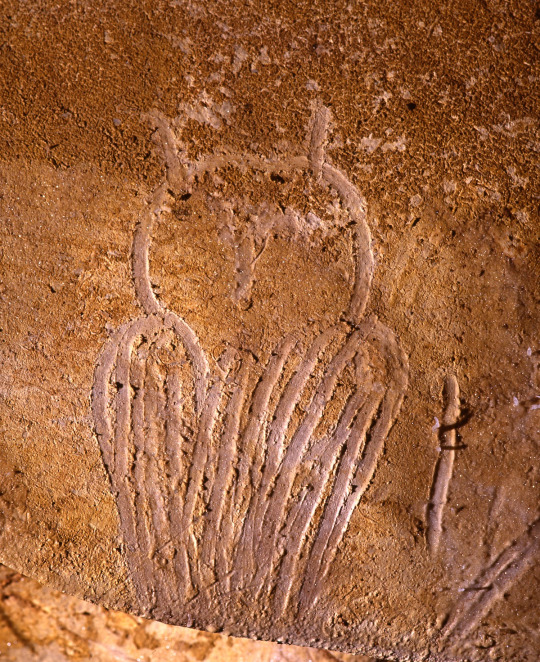
by Patrick McShea
Could you finger-paint a more detailed owl than the one pictured above? In classes about owls at Carnegie Museum of Natural History students always answer with an enthusiastic “Yes.”
The question is a ruse, a simple trick to direct listeners to consider which features they would illustrate, or perhaps even exaggerate, to fashion a recognizable owl.
Any thoughts of competitive art-making subside when background information about the image is supplied. The owl portrait, which measures just over 18 inches in height, was scraped into the soft rock surface of a cave wall in southern France more than 30,000 years ago. Chauvet-Pont-d’Arc Cave, which was discovered in 1994 and named a UNESCO World Heritage site a decade later, contains more than 1,000 ancient images, most of which are animal depictions.
Before the owl lesson moves on from image to object, and the close examination of feathers, skulls, and study skins, some consideration is given to all that separates us from the anonymous artist. We easily recognize the cluster of ancient rock scrapes as an owl, but were the scraper to magically appear, that person would comprehend little of our world, particularly the electronic devices by which the cave art is increasingly shared.
Patrick McShea works in the Education and Visitor Experience department of Carnegie Museum of Natural History. Museum employees are encouraged to blog about their unique experiences and knowledge gained from working at the museum.
